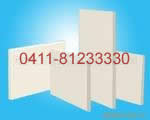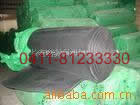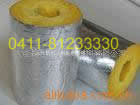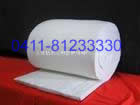It is found that the energy loss through the external Windows of the house is very serious, which is the main cause of affecting the building thermal environment and causing excessive energy consumption. In traditional buildings, the heat transfer through the Windows accounts for more than 20% of the total building energy consumption. In energy-saving buildings, the heat loss of Windows accounts for a larger proportion of the total energy consumption after the thermal resistance of insulation materials is increased. The energy loss of doors and Windows is caused by the heat exchange between the doors and Windows and the surrounding environment. Loss of heat transfer through glass; Heat loss through panes and window frames; Heat loss caused by window opening thermal bridge; Heat loss due to penetration of gaps by cold air.
As we have learned, the factor that affects size of heat loss of door window is very much, basically have the following respects:
Heat transfer coefficient of aluminum - wood composite doors and Windows. The coefficient of heat transfer of door window of aluminous wood is to point to the heat transfer that passes unit area inside unit time. The greater the coefficient of heat transfer, the greater the heat loss through the doors and Windows in winter. The heat transfer coefficient of door window is concerned with the material of window of aluminous wood, type again. Air tightness of aluminum and wood doors and Windows. The airtightness of aluminum and wood doors and Windows refers to the ability to prevent air penetration under the closed state of doors and Windows. The level of air tightness of doors and Windows has a great impact on the loss of heat. The change of outdoor wind force will have an adverse impact on room temperature. The higher the level of air tightness, the less the heat loss will be and the smaller the impact on room temperature will be. Window-wall ratio coefficient and orientation. Window-wall ratio refers to the ratio of the area of external Windows to the area of external walls. Generally, the heat transfer resistance of aluminum and wood doors and Windows is much smaller than that of walls. Therefore, the cold and heat consumption of buildings increases with the increase of the area ratio of Windows and walls. As a measure of building energy conservation, it is required to determine the appropriate window-wall ratio under the condition of lighting and ventilation. Generally speaking, the solar radiation intensity and illumination rate of different orientations are different, and the solar radiant heat obtained by Windows is also different. Aluminum-wood door window energy-saving way basically is heat preservation heat insulation. The measures include: improving the thermal insulation performance of doors and Windows; Improve the heat insulation performance of doors and Windows, improve the air tightness of doors and Windows.
Choose an energy-saving window. Window shape is the first element that affects energy-saving performance. The energy-saving effect of push-pull window is poor, and the energy-saving effect of flat window and fixed window is superior. Push pull a window to slide course to slide back and forth in window frame, upside has bigger space, bottom has the space between pulley, window sash forms apparent convection to exchange above and below, the convection of hot cold air forms bigger heat loss, right now, no matter use what heat insulation profile to make window frame to achieve energy-saving effect less than. Casement Windows usually have a rubber seal between the window frame and window sash of layering, the casement is turned off, the sealing rubber layering pressure very tight, almost no gap, it is difficult to form the convection, heat loss is mainly glass window frame and window sash, profile itself of the heat conduction, radiation and contact window frame and window sash position leaking air mixing, and the air leakage between window frame and wall body, etc. Since the fixed window frame is embedded in the wall, the glass is directly installed on the window frame, and the glass and window frame have been sealed with rubber strip or sealant, it is difficult for air to form convection through sealant, and it is difficult to cause heat loss. In fixed Windows, the heat conduction of glass and window frame is the main source of heat loss. If effective measures are taken on glass, the energy saving effect can be greatly improved. Accordingly, tell from the structure, fixed window is the window model with the most energy-saving.
Design reasonable window sash ratio and orientation. Generally speaking, the heat transfer coefficient of Windows is greater than that of external walls with the same orientation and area. Therefore, the energy and heat consumption of heating increase with the increase of the proportion of window and wall. Under the condition that lighting and ventilation allow, controlling the proportion of window-wall is more effective than setting insulation curtain and window-board, that is, the smaller the area of window-wall is compared with the design, the smaller the heat loss will be and the better the energy saving effect will be. Heat loss is also related to the orientation of the outer window. The intensity of solar radiation and the rate of solar illumination in the south and north directions are high, and the solar radiation heat obtained by the window is much higher. In "standard of civil building energy-saving design (heating residential building part)" in, although ratio of area of window wall and front made optional provision, but still should undertake adjusting appropriately according to the specific circumstance of each district. Have an expert to put forward: the daylighting when considering living room to be in northward needs, the window wall area of south, northward is compared advisable 0.3; Considering the current situation of some tower houses, the window wall area ratio of east and west can be 0.35; Take into account the opportunity that appears window of French floor, bay to the south more, the window wall area of south is taken than 0.45. Although such increased the area of south outward window, but the radiant heat that can make full use of solar energy reduces heating energy consumption, realize already capacious and bright visual field does not waste the purpose of energy again.
Use energy-efficient materials. As a result of the development of new-style material, the advocate material that makes up a window (frame makings, glass, airproof, hardware accessory and sunshade establishment) technology progress is very fast, use energy-saving material is the effective way that door window saves energy.
Frame material: window profile accounts for about 15%%~30%% of the area of the opening of the window, which is another weak link of energy loss in the building external window. Therefore, the selection of window profile is also crucial. At present the frame type of energy-saving window is very much, if break hot aluminous material, break hot rolled steel, plastic profile, glass rolled steel and compound material (aluminous model, aluminous wood). Among them, the heat aluminum energy-saving effect is better, more widely used, it not only retains the advantages of aluminum, but also greatly reduce the heat transfer coefficient of aluminum. Hot - break aluminum is an aluminum alloy profile section in the use of hot bridge (cold bridge) technology to make the profile into two parts.
At present, there are two kinds of processes: one is the glue-injection type heat transfer technology (i.e., casting and cutting bridge technology), which can produce both symmetrical heat transfer profiles and asymmetric profiles. Because of the principle of filling the forming space with pouring treatment fluid, the finished product precision is very high. The other is the hot-break bar embedding technology, namely, the hot-break bar is synthesized by polyphthalein 66 and 25% glass fiber (PA66GF25), which is combined with aluminum alloy profiles under external extrusion to form hot-break aluminum profiles. This profile is not only of high strength (close to aluminum alloy), but also of good mechanical properties and good heat insulation. Due to the addition of heat insulation strips, the profiles form a variety of cross-sectional forms with good strength. In addition, the glass fiber in the heat insulation strip is arranged in an orderly way, which can withstand high tensile stress and high shear stress for a long time. The linear expansion coefficient of the heat insulation strip is close to aluminum, which has very good processing performance. At the same time, internal and external profiles can be composed of profiles with different colors and surface treatment methods, which enhances the decorative effect; And can resist a variety of acid, alkali chemical corrosion.
Glass: in the window, glass area takes up 65%%~75%% of the window area. The thermal resistance of ordinary glass is very small, and it almost completely absorbs the far-infrared thermal radiation. There are many kinds of window glass. Different kinds of glass, its transmittance, shading coefficient, heat transfer coefficient is greatly different. Heat conduction sex and block masculine gender, having duality. For winter, we want the heat from the sun's radiation to warm the room. But in the summer, they want to reduce the solar radiation and avoid entering the room.
Therefore, for different areas, should choose the corresponding heat transfer coefficient and shading coefficient of glass. In order to lower the derivative
 Aluminum plates, aluminum long felt Dalian Wang sea
Aluminum plates, aluminum long felt Dalian Wang sea Rubber insulation board, plus gum rubber sheet, rub
Rubber insulation board, plus gum rubber sheet, rub Dalian expansion of fire and smoke seals, fire seal
Dalian expansion of fire and smoke seals, fire seal Rockwool pipe, plus foil rock wool pipe, glass fibe
Rockwool pipe, plus foil rock wool pipe, glass fibe Refractory ceramic fiber blanket insulation materia
Refractory ceramic fiber blanket insulation materia